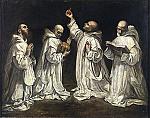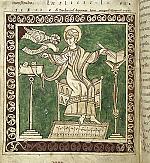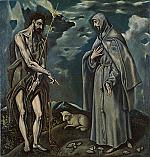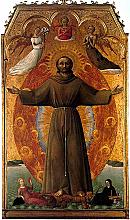Poor in spirit, new in Christ

[Ernst Friedrich August Rietschel, Peter Waldo, bronze statue, 1868, Luther Memorial, Worms, Germany—©Alexander Hoernigk / [CC BY-SA 4.0] Wikimedia File:Worms Lutherdenkmal Petrus Waldus 2012-02-21-18-24-52.jpg]
They go about two by two, barefoot, clad in woollen garments, owning nothing, holding all things common like the apostles, naked, following a naked Christ. They are making their first moves now in the humblest manner because they cannot launch an attack. If we admit them, we shall be driven out. So wrote twelfth-century churchman Walter Map in response to the early Waldensians. His words illustrate the eagerness of these late medieval “heretics” to experience in their own time the vitality of the earliest Christians. But these attempts to radically renew the church would soon threaten the medieval religious establishment.
The movement began in the 1170s with the conversion of a prominent merchant from Lyons named Valdes (d. 1218). Moved by the story of St. Alexis, who had left his Roman parents to live in poverty, Valdes sought counsel from a theologian, who shared Jesus’s words to the rich young man: “If you want to be perfect, go sell what you have.” Having made provision for his family, Valdes—like Zacchaeus, the tax collector—recompensed those from whom he had made unjust profits. He commissioned two priests to translate major portions of the Bible and the church fathers from Latin into the Provencal dialect and then studied and memorized these. Joyfully he gave away all his remaining property and began to travel on foot.
People gravitated to Valdes’s preaching and lifestyle. Men and women joined him, committing to spread the gospel in their language, to identify with the poor by becoming poor themselves, and to take the teachings of Jesus—which had often been viewed as for the holy or eccentrics—as the rule of life for all Christians.
Valdes hoped the preaching and example of his itinerant followers (the “Poor in Spirit”) would spur renewal in the whole church. At first some, including Pope Alexander III, gave them cautious encouragement. But within a decade, the bishops had forbidden them to preach. When they persisted they were banished from Lyons. For the next 300 years, they were on the run, at times persecuted severely. Nevertheless the movement spread, reaching as far northeast as Moravia and as far south as the heel of Italy by 1211.
The dangerous Bible
Through the newly founded Inquisition, the church sought to snuff out the Waldensian movement. Church leaders feared what they saw as the Waldensians’ dangerous use of the Bible—translations that opened the text directly to laypeople and also seemed unduly literal.
But the Waldensians believed faithful interpretation of Scripture meant taking Jesus’s words at face value. To follow the Bible’s teachings and retrieve the church’s apostolic roots, the church needed to change. The Waldensians hoped to accomplish that, not by displacing the church, but by fostering renewal. Yet, as resistance to such change and persecution intensified, they had little choice.
In the early thirteenth century, some did stay, even forming a near-monastic order, the “Catholic Poor.” Yet others chose to leave the church. It had been seduced by power, they came to believe, since the time of the emperor Constantine; it was “infused with the venom of temporal wealth.” Many Waldensians appeared publicly in services in their parishes, but they found their true fellowship and nurture in illicit cells of brothers and sisters.
The Waldensians eventually formed their own leadership structure. Clandestine pastors traveled between the cells, preaching and hearing confessions, carrying with them pocket-sized theological works from Hussite sources. Though driven out, scattered, and reduced in number, the Waldensians’ flame burned bright—another spark in the wave of reformation soon to come. CH
By Alan Kreider
[Christian History originally published this article in Christian History Issue #149 in 2023]
Alan Kreider (1941–2017) was emeritus professor of church history and mission at the Anabaptist Mennonite Seminary in Elkhart, Indiana. This article originally appeared in CH # 9.Next articles
Praying and preaching for a better church and society
Revival and renewal took many different forms in the High and late Middle Ages
Jennifer BoardmanChristian History Timeline: Reform, renewal, revival, reaction
Both clergy and laity sought a renewal of devotion and an end to corruption throughout the Middle Ages —but it was sometimes a bumpy road
the editors“Repair my house”
Francis of Assisi and his followers called the church back to holiness through vibrant preaching and voluntary poverty
Jon M. SweeneyWalking in the way of St. Francis
Recommendations for reform from the traveling preacher
Francis of AssisiSupport us
Christian History Institute (CHI) is a non-profit Pennsylvania corporation founded in 1982. Your donations support the continuation of this ministry
Donate







